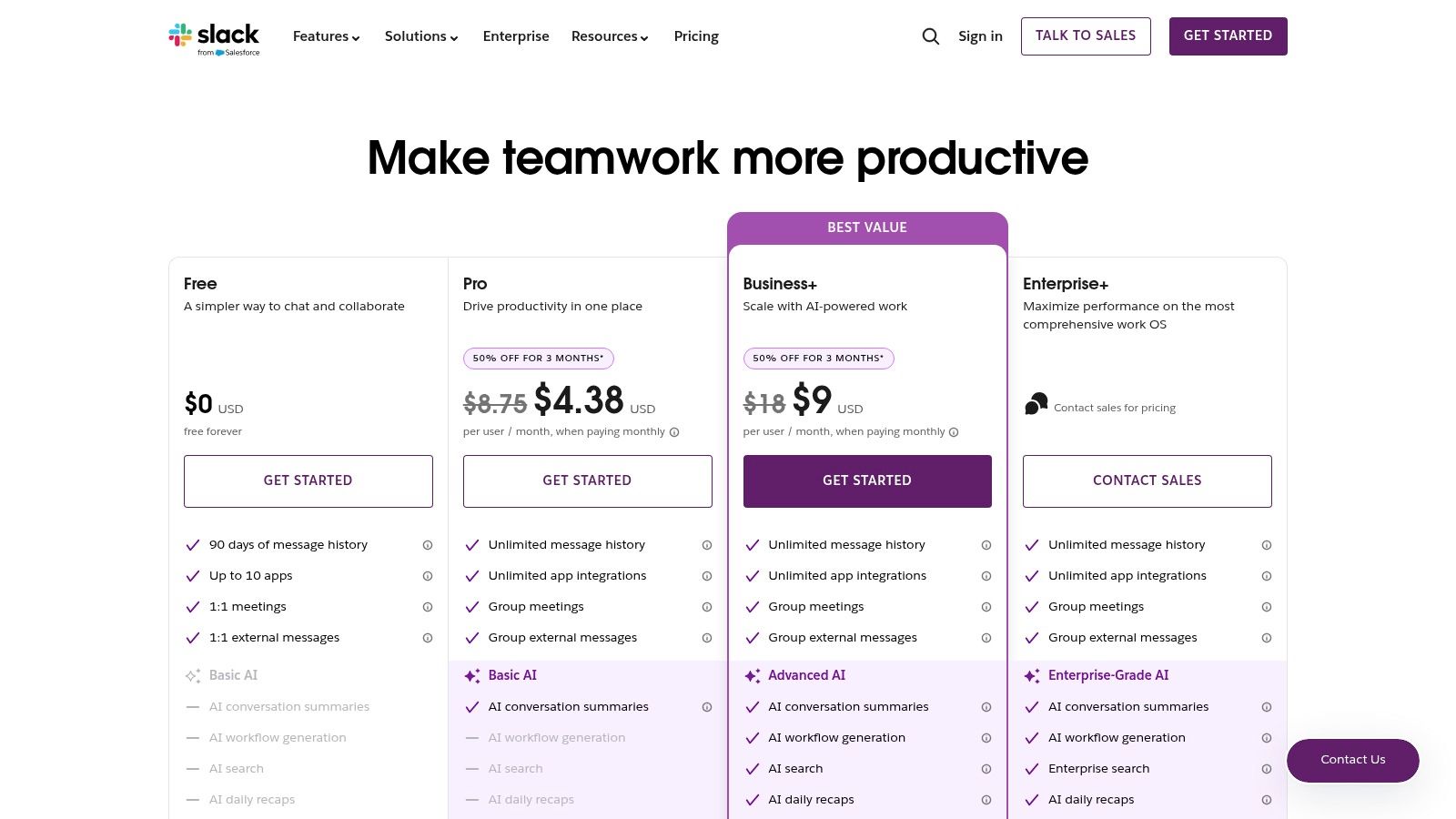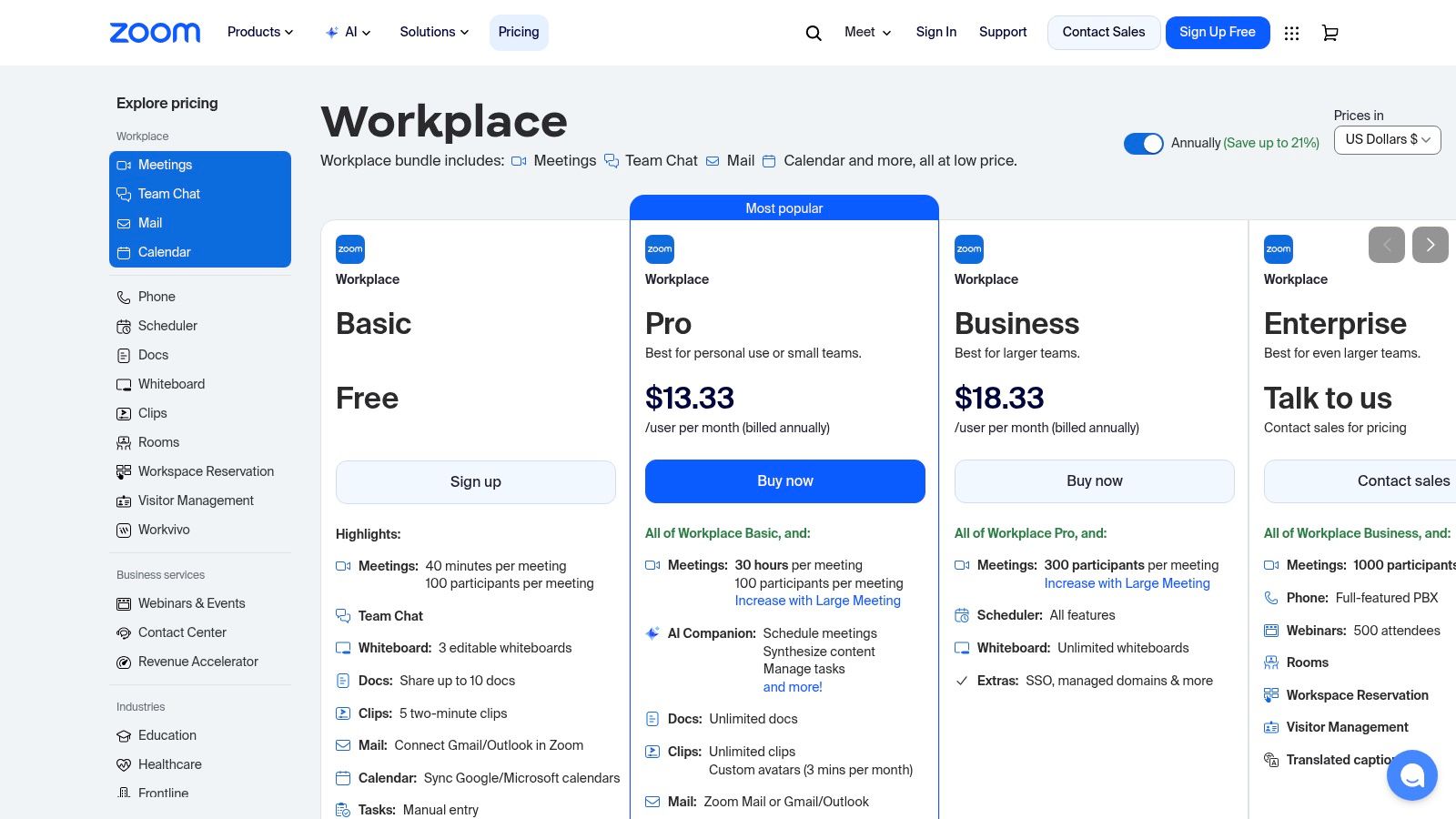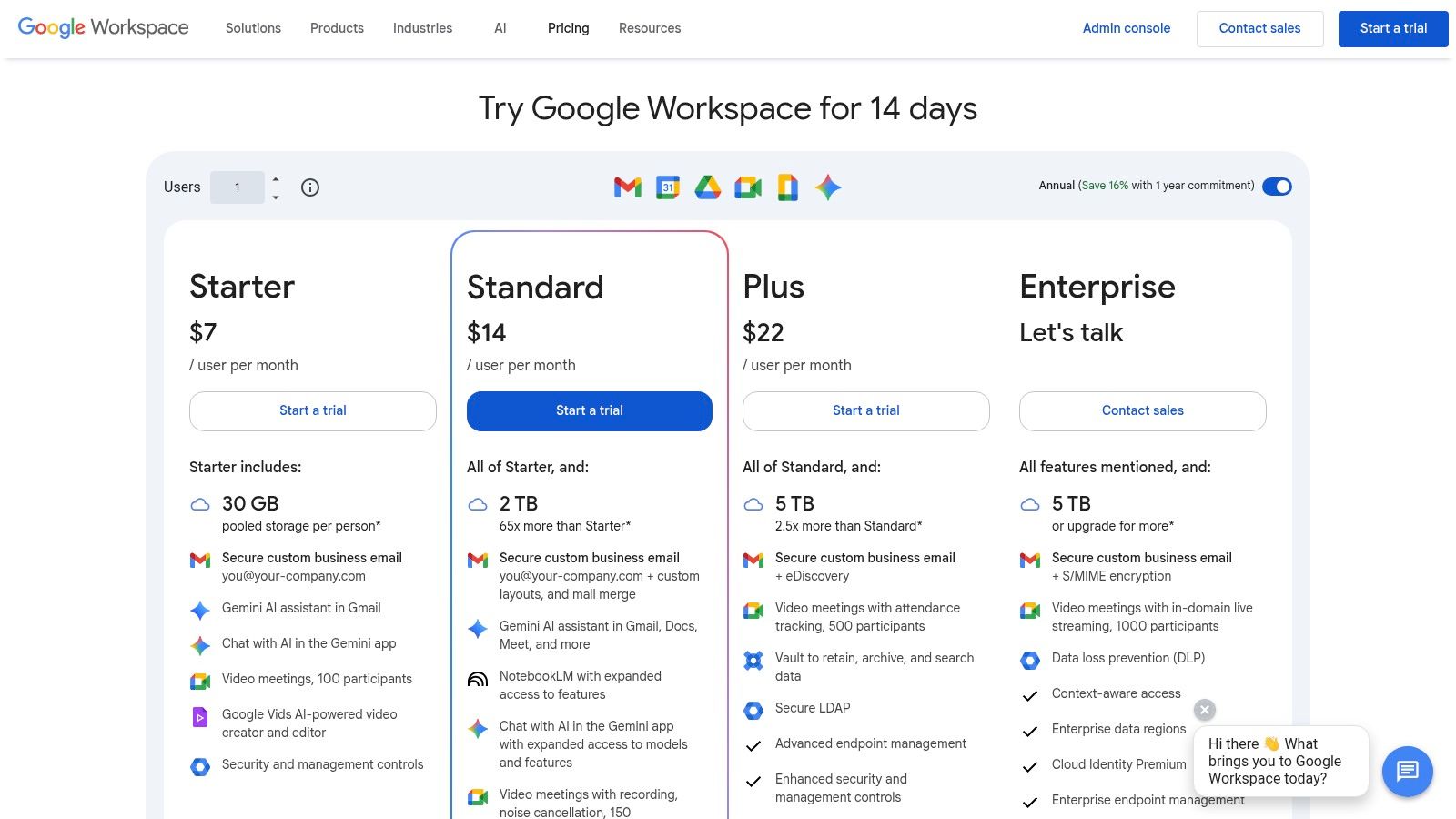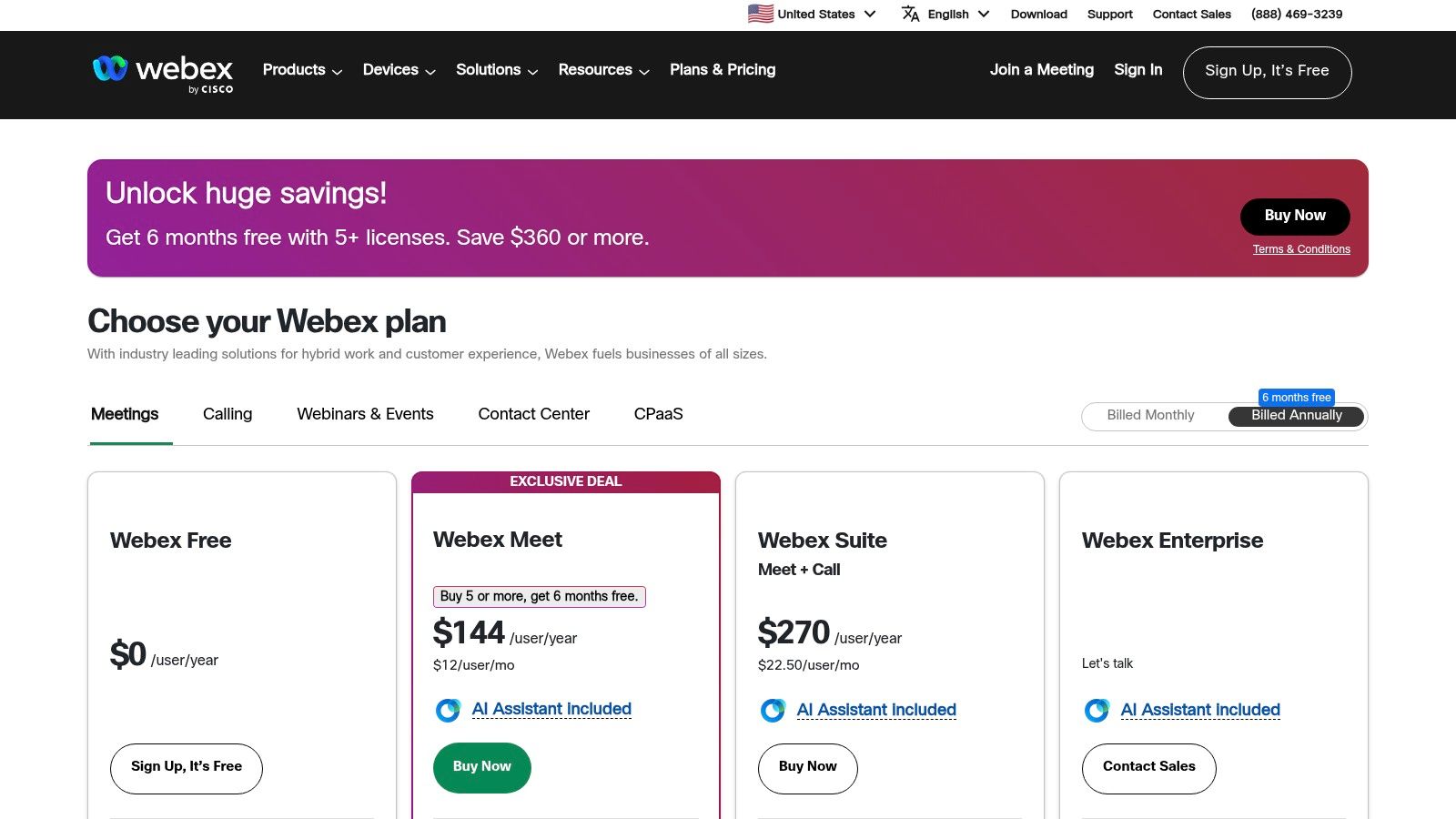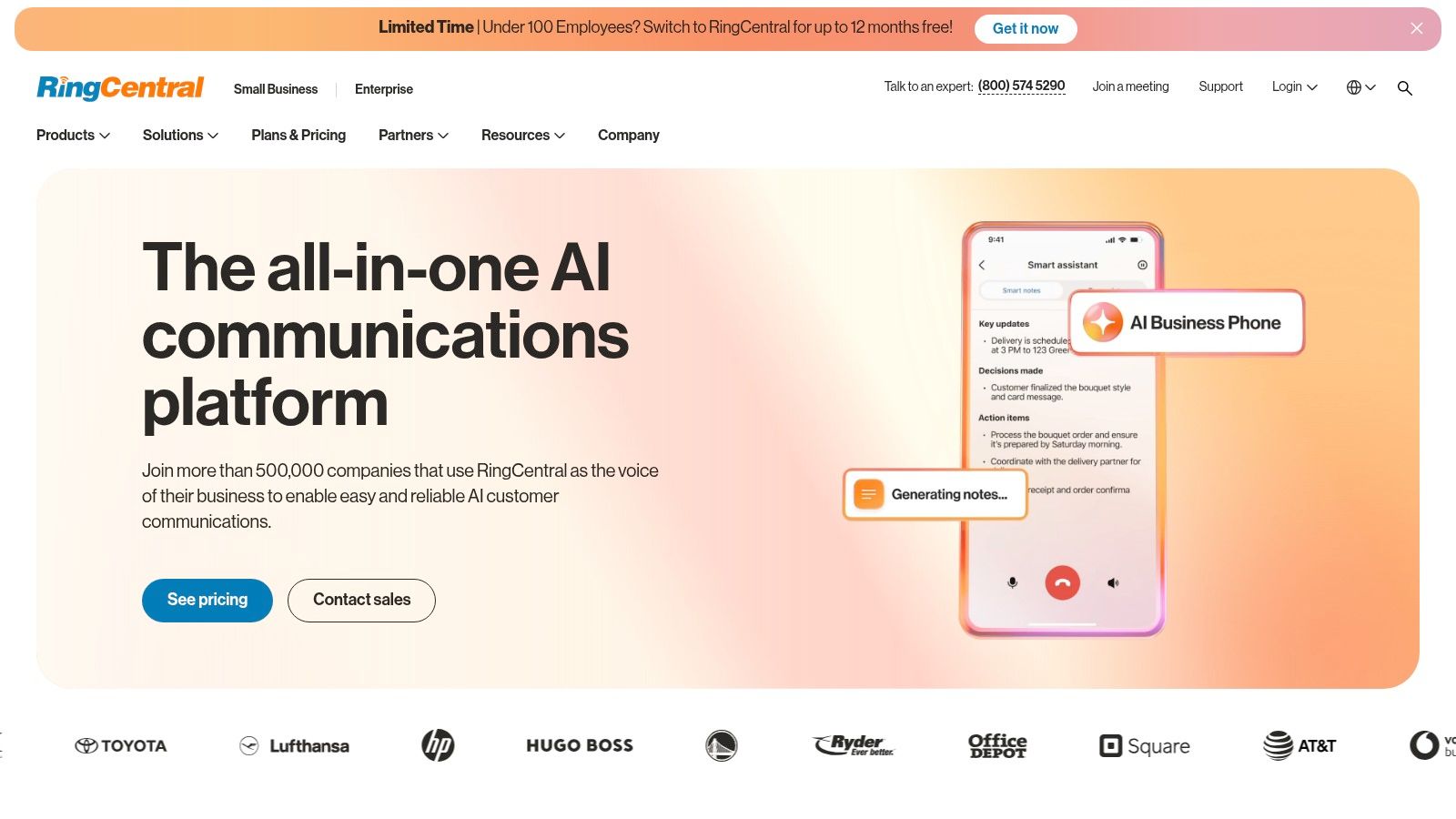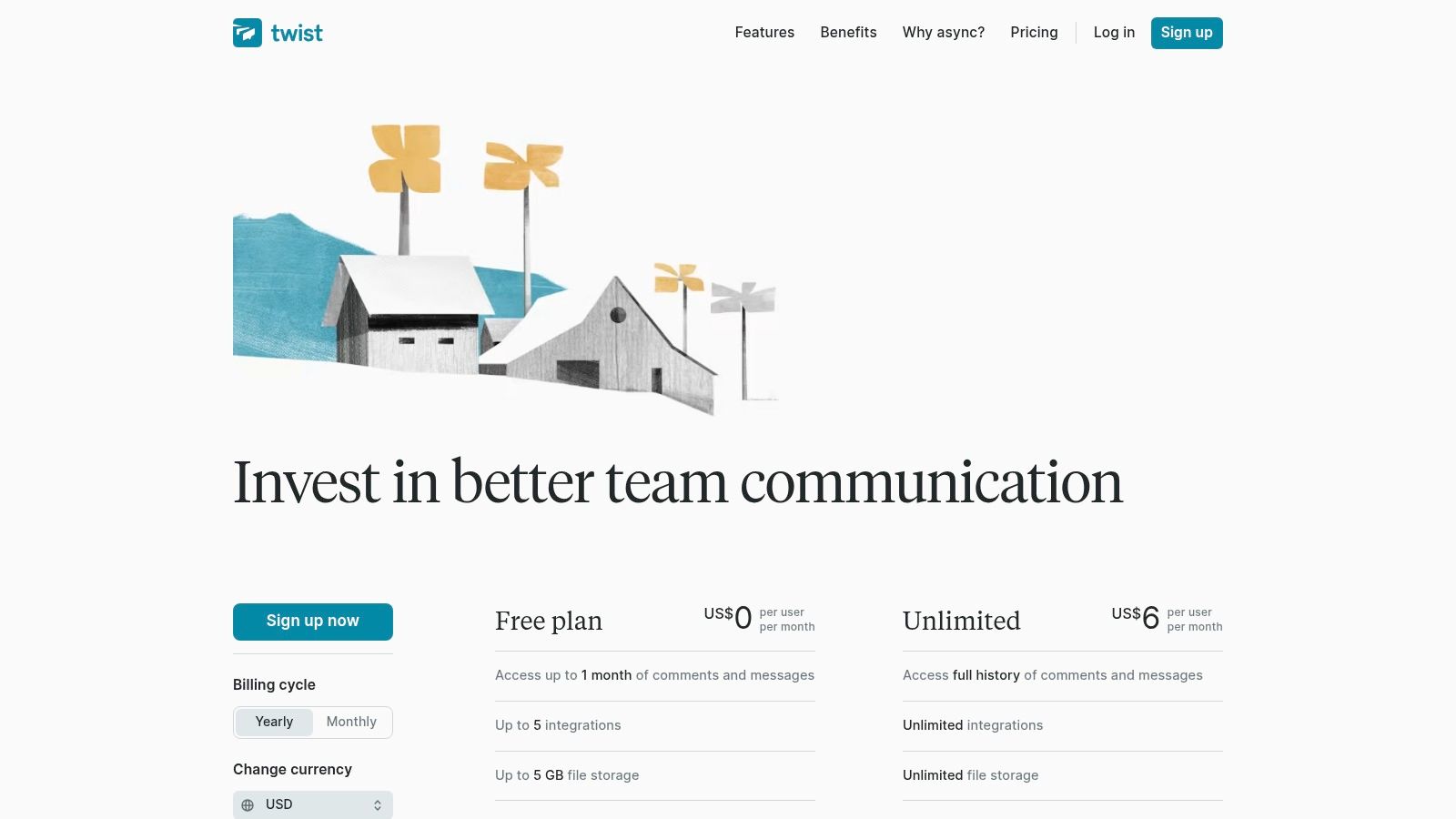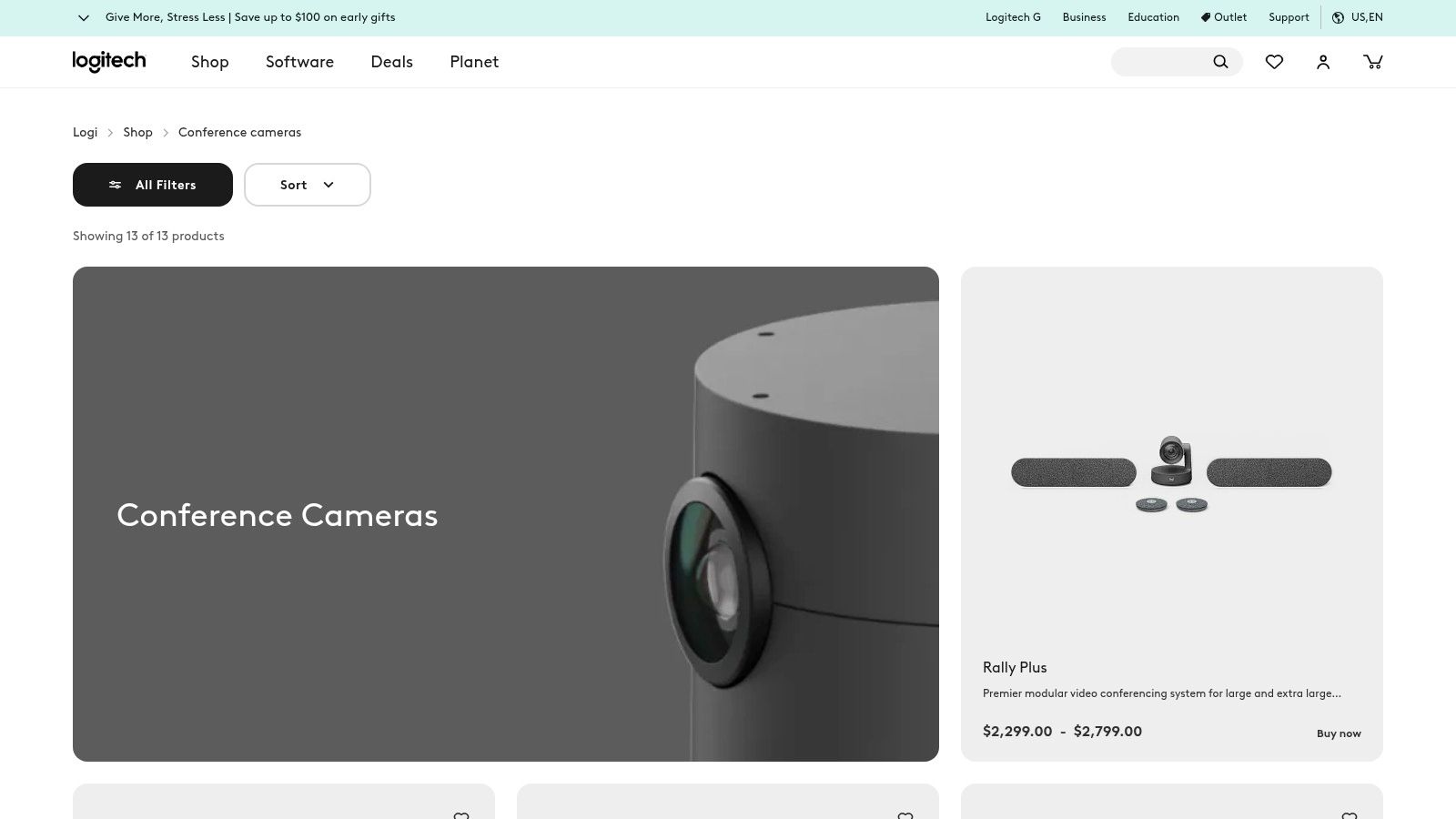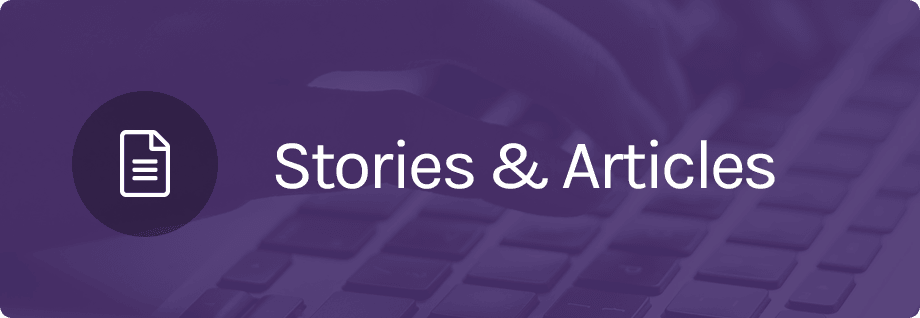In remote-first organizations, communication tools for remote teams are the backbone of daily operations. They do more than connect colleagues; they cut through noise, align tasks and keep everyone on the same page. Non-profit leaders, grant writers, COOs and IT managers depend on these platforms to coordinate fundraisers, patient outreach or cross-department collaboration. Selecting the wrong mix can slow projects, frustrate staff and expose compliance risks. With so many chat apps, video solutions, and unified comms suites on the market, the choice has never been more complex.
This guide cuts through marketing noise to present a curated list of the 12 best communication tools for remote teams in 2025. From OpsHub’s end-to-end integration to Slack’s channel-based threads, Microsoft Teams’ deep Microsoft 365 ties and Zoom Workplace’s high-fidelity video, we cover each platform’s core strength. You’ll find pricing tiers, real usage scenarios for small medical practices or busy fundraisers, honest pros and cons, and notes on how OpsHub can complement or replace your existing stack. Every entry includes screenshots and direct links for fast evaluation.
What you’ll get at a glance:
- A comparison table of key features across all 12 platforms
- Screenshots and direct links for instant access
- Pricing tiers and budget breakdowns
- Use cases tailored to non-profit leaders, fundraisers, COOs, IT teams and healthcare practices
- Honest pros and cons to flag potential pitfalls
- Integration notes showing how OpsHub complements or replaces each tool
- Step-by-step implementation tips to accelerate adoption
Ready to upgrade your remote team’s communication? Scroll down to explore each tool, compare features at a glance and find the platforms that fit your organization’s needs fast. Whether you’re centralizing chat, boosting video reliability or unifying voice and data, this resource will save you research hours and help you build a lean, resilient tech stack.
1. OpsHub
OpsHub stands out as a premier choice by transforming the very foundation of team collaboration from scattered conversations into a unified, intelligent command center. It fundamentally rethinks how remote teams communicate by centralizing project management, task tracking, and crucial data streams, effectively reducing the constant noise from multiple inboxes and notification channels. For organizations deeply integrated with Google Workspace, OpsHub provides a native layer that turns familiar tools like Gmail and Google Docs into components of a seamless operational workflow.
This platform isn't just another project tool; it’s an AI-powered operations engine. By automating repetitive tasks and surfacing critical insights through integrated analytics, OpsHub allows teams to focus on strategic, high-value work rather than getting bogged down in administrative minutiae. This makes it an exceptional asset among communication tools for remote teams, especially for leaders in non-profits, small medical practices, and other mission-driven sectors who need to maximize efficiency and achieve predictable outcomes.
Key Strengths and Use Cases
- Unified Command Center: Consolidates disparate workflows into a single interface. This is ideal for a COO or IT lead aiming to eliminate information silos and reduce the cost and friction of switching between multiple applications.
- AI-Driven Automation: Automates routine processes, from task assignments to progress updates. A grant writer, for example, could automate the tracking of application milestones, ensuring deadlines are never missed and freeing up time for crafting compelling proposals.
- Deep Google Workspace Integration: As a Workspace-native platform, onboarding is remarkably smooth for teams already using Google's suite. It turns your existing tools into a more powerful, cohesive system without a steep learning curve. You can find more details in their resources on IT project management best practices on signal.opshub.me.
- Actionable Analytics: Provides clear visibility into operational bottlenecks and team performance. This empowers leaders to make data-driven decisions to optimize resource allocation and improve processes.
Considerations
OpsHub’s primary strength is its deep connection to the Google ecosystem, which may be a limitation for organizations reliant on other platforms like Microsoft 365. Additionally, pricing information is not publicly available and requires direct contact with their sales team for a consultation.
Website: https://signal.opshub.me
2. Slack
Slack has become nearly synonymous with team messaging, establishing itself as a central hub for real-time, asynchronous, and external communication. It excels at creating structured, searchable conversations through its signature channels, which can be organized by project, team, or topic. This structure prevents critical information from getting lost in endless email chains, a common pain point for distributed teams.
Its real power lies in its deep integration ecosystem, boasting over 2,600 apps. This allows teams to centralize notifications and actions from other critical software directly within Slack, creating a unified operational view. For example, a grant writing team can get updates from their project management tool, or a medical practice can receive alerts from their scheduling software, all within one platform.
Key Considerations for Slack
Best Use Case: Fast-moving teams, especially in tech, non-profits, or IT, that need a highly extensible and searchable communication hub for both internal and external collaboration (via Slack Connect).
OpsHub Integration Note: While OpsHub provides a unified inbox for external client communications, Slack serves as the ideal internal counterpart. You can use integrations to pipe alerts from OpsHub into a dedicated Slack channel, keeping your internal team informed of new client messages without them having to leave their primary workspace.
Pros & Cons:
| Pros | Cons |
|---|---|
| Extensive Integrations: The largest app ecosystem of any team messenger. | Potential for Noise: Requires clear governance to prevent channel sprawl. |
| Powerful Search: Easily find past conversations, files, and decisions. | Cost: Pricing is user-based and can become expensive for large teams. |
| Slack Connect: Seamlessly collaborate with external partners and vendors. | Feature Gating: Key features like unlimited history and AI are on paid plans. |
Pricing: Slack offers a free tier with a 90-day message history limit. Paid plans are Pro ($8.75/user/mo), Business+ ($15/user/mo), and custom Enterprise Grid pricing.
Website: https://slack.com/pricing
3. Microsoft Teams (within Microsoft 365)
For organizations already embedded in the Microsoft ecosystem, Teams offers a deeply integrated communication and collaboration platform. It combines chat, video meetings, and file storage (via SharePoint and OneDrive) into a single application, serving as a powerful alternative to stitching together multiple tools. Its core strength is leveraging the existing Microsoft 365 infrastructure, providing a cohesive user experience across familiar apps like Outlook and Office.
This native integration creates a streamlined workflow. A non-profit can collaborate on a Word document directly within a Teams channel, a medical practice can schedule meetings that automatically sync with Outlook calendars, and all conversations are governed by robust, enterprise-grade security. This unified approach can significantly improve operational efficiency by reducing context switching between disparate applications.
Key Considerations for Microsoft Teams
Best Use Case: Organizations of any size that heavily rely on the Microsoft 365 suite, particularly those in healthcare or regulated sectors that require strong security, compliance, and centralized administration.
OpsHub Integration Note: While Teams is excellent for internal collaboration, OpsHub manages all external communication channels. You can use a Power Automate or Zapier connector to send a notification to a specific Teams channel when a new conversation starts in OpsHub, ensuring your internal team is immediately aware of client inquiries without needing to monitor the OpsHub inbox directly.
Pros & Cons:
| Pros | Cons |
|---|---|
| Deep Microsoft 365 Integration: Seamlessly works with Outlook, SharePoint, etc. | Complex Licensing: Can be confusing to navigate plans and add-ons. |
| Enterprise Security & Compliance: Leverages robust Microsoft security features. | Ecosystem Dependent: The best experience relies on using the full M365 stack. |
| Strong Meeting & Rooms Ecosystem: Excellent support for video conferencing hardware. | Less Extensible: The app marketplace is smaller compared to competitors like Slack. |
Pricing: Teams is included in most Microsoft 365 Business and Enterprise plans. Standalone options include Teams Essentials ($4/user/mo) and Microsoft 365 Business Basic ($6/user/mo), which includes Teams and web/mobile versions of Office apps.
Website: https://www.microsoft.com/en-us/microsoft-teams/compare-microsoft-teams-options
4. Zoom (Zoom Workplace)
Zoom became the go-to for video conferencing by delivering exceptional reliability and a user-friendly interface. While best known for meetings, Zoom Workplace has evolved into a more comprehensive platform by integrating persistent Team Chat, a collaborative Whiteboard, and scheduling tools. This expansion makes it a strong contender among communication tools for remote teams that prioritize synchronous, face-to-face interaction.
Its key differentiator remains its high-quality video and audio performance, even on less-than-ideal internet connections. The introduction of the AI Companion for paid plans adds significant value, offering automated meeting summaries, next steps, and coaching feedback. For organizations like small medical practices or non-profits that rely on virtual consultations and stakeholder meetings, Zoom provides an accessible and dependable solution.
Key Considerations for Zoom
Best Use Case: Organizations of any size, from solo grant writers to large non-profits, that need a best-in-class video meeting solution with integrated chat and collaboration tools for a unified experience.
OpsHub Integration Note: Zoom is ideal for scheduled client meetings and internal huddles, while OpsHub manages the asynchronous, text-based communication that happens before and after. You can use an OpsHub shared inbox to coordinate meeting logistics with a client, then seamlessly transition to a Zoom call for the actual discussion, keeping all communication organized.
Pros & Cons:
| Pros | Cons |
|---|---|
| Simple User Experience: Extremely easy for new users to join and participate. | Fragmented Add-ons: Key features like Webinars and Phone are separate costs. |
| High Call Quality: Industry-leading reliability for video and audio. | Strict Renewal Policies: Some users report difficulty with refunds; verify terms. |
| Rich Add-on Ecosystem: Scales with needs like Zoom Phone, Rooms, and Events. | Meeting Fatigue: Over-reliance can lead to burnout without asynchronous options. |
Pricing: Zoom offers a free Basic plan with a 40-minute meeting limit. Paid plans are Pro ($15.99/user/mo), Business ($19.99/user/mo), and custom Enterprise pricing.
Website: https://zoom.us/pricing
5. Google Workspace (Meet and Chat)
For organizations already embedded in the Google ecosystem, Google Workspace offers a deeply integrated suite of communication tools. It combines Google Meet for video conferencing and Google Chat for team messaging, all tightly woven into familiar applications like Gmail, Drive, Docs, and Sheets. This native integration streamlines workflows, allowing teams to start a video call from a chat message or collaborate on a document directly within a Chat space.
The platform's strength lies in its unified environment, which reduces context switching and simplifies user management. Features like Gemini AI are now being integrated across the suite, offering assistance in drafting emails, summarizing meetings, and organizing documents. For a grant writing team, this means seamless collaboration on a proposal document while simultaneously discussing edits in a connected Chat space, making it one of the most cohesive communication tools for remote teams centered on document creation.
Key Considerations for Google Workspace
Best Use Case: Non-profits, small medical practices, and any team that relies heavily on Google Docs, Sheets, and Drive for daily operations and desires a single, unified billing and user management system.
OpsHub Integration Note: Google Workspace is excellent for internal collaboration, especially around documents. OpsHub complements this by managing all external communications. You can use a service like Zapier to create a notification in a Google Chat space when a new client message arrives in your OpsHub inbox, keeping your internal team aligned without disrupting their primary workflow. For a deeper dive, learn more about using Google Workspace for project management.
Pros & Cons:
| Pros | Cons |
|---|---|
| Seamless Collaboration: Unparalleled integration with Docs, Sheets, and Drive. | Tiered Features: Advanced features like longer meeting recordings are on higher plans. |
| Simple Licensing: Pricing and user management are tied to Google identities. | Storage Limits: Pooled storage may require purchasing add-ons for heavy use. |
| Strong Browser Experience: Works efficiently without requiring desktop applications. | Less Extensible: Smaller third-party app ecosystem compared to competitors like Slack. |
Pricing: Google Workspace offers a Business Starter plan at $6/user/mo, with more advanced plans like Business Standard ($12/user/mo), Business Plus ($18/user/mo), and custom Enterprise pricing.
Website: https://workspace.google.com/pricing
6. Cisco Webex
Cisco Webex is an enterprise-grade unified communications platform that combines meetings, messaging, and calling into a single, secure environment. It stands out particularly for organizations with stringent security and compliance needs, such as government agencies or healthcare providers, offering a FedRAMP-authorized solution. Webex provides a comprehensive hardware ecosystem, ensuring a seamless experience from desktop software to dedicated room and phone devices.
The platform is more than just a video conferencing tool; it’s a full suite designed to support hybrid work at scale. Its AI Assistant helps with meeting summaries and action items, while its calling features can replace traditional phone systems. This all-in-one approach makes it a powerful choice among communication tools for remote teams in regulated industries.
Key Considerations for Cisco Webex
Best Use Case: Large or regulated organizations, such as government contractors, healthcare systems, and financial institutions, that require high security, compliance (like FedRAMP), and a fully integrated hardware and software ecosystem.
OpsHub Integration Note: For organizations using Webex for internal collaboration, OpsHub can manage the external communication channels like SMS and web chat. This allows your team to maintain secure internal communications in Webex while using OpsHub’s unified inbox to handle client and patient interactions efficiently, ensuring compliance across all touchpoints.
Pros & Cons:
| Pros | Cons |
|---|---|
| Robust Security & Compliance: Leading features like FedRAMP authorization. | Complex Administration: The UI and licensing can be challenging to navigate. |
| Full Hardware Ecosystem: Integrates seamlessly with Cisco room devices and phones. | Higher-Tier Plan Dependency: Many advanced features are not available on basic plans. |
| Scales for Enterprise: Built to handle the needs of large, distributed organizations. | Less Intuitive Interface: Can feel less modern compared to some competitors. |
Pricing: Webex offers a free Basic plan. Paid plans include Meet Plan ($14.50/user/mo) and the Suite (Meet + Call) Plan ($25/user/mo), with custom pricing for Enterprise.
Website: https://pricing.webex.com/us/en/hybrid-work/meetings/all-features
7. RingCentral (MVP unified communications)
RingCentral delivers a comprehensive, all-in-one Unified Communications as a Service (UCaaS) platform, combining messaging, video, and a powerful cloud phone system. It stands out by consolidating core communication channels into a single application, eliminating the need for separate tools for chat, meetings, and business calls. This unified approach is ideal for organizations wanting to simplify their tech stack and provide a consistent user experience.
The platform’s strength is its mature telephony features, which are far more advanced than typical add-ons from other chat apps. For businesses that rely heavily on voice communication, like medical practices for patient follow-ups or non-profits for donor outreach, RingCentral provides a robust, enterprise-grade phone system directly integrated with their internal messaging and video conferencing tools.
Key Considerations for RingCentral
Best Use Case: Organizations, such as small medical practices or established non-profits, that require a single, reliable platform for all internal and external communication, with a strong emphasis on business telephony features.
OpsHub Integration Note: RingCentral excels at unifying internal communications (chat, video, phone). OpsHub complements this by managing all external client messaging from channels like SMS, web chat, and social media. You can configure RingCentral to forward business SMS to your OpsHub number, ensuring all client text conversations are captured, tracked, and managed in one unified inbox.
Pros & Cons:
| Pros | Cons |
|---|---|
| Single-Pane UC: Mature telephony, video, and messaging in one app. | Pricing Complexity: List prices vary by plan and term; final cost requires sales verification. |
| Flexible Hardware: Device-as-a-Service (DaaS) makes procuring phones easy. | Contract Variations: Terms can differ by sales channel, so read contracts carefully. |
| Integrated Events: Offers webinar and virtual event SKUs within the ecosystem. | Feature Overlap: May offer more features than a team focused solely on chat requires. |
Pricing: Core plans start at $20/user/mo (billed annually). Advanced tiers with more integrations and analytics are available. Custom quotes are provided for enterprise needs.
Website: https://www.ringcentral.com
8. Twist by Doist
Twist challenges the real-time, always-on nature of most team chat apps. Created by the team behind Todoist, it is designed for asynchronous communication, prioritizing focused work over constant interruptions. Its core structure is built around threads, ensuring every conversation stays organized by topic, making it easy to catch up on long-form discussions without the pressure of an ever-scrolling chat feed. This makes it an excellent choice for distributed teams operating across different time zones.
Unlike platforms that encourage rapid-fire responses, Twist fosters a calmer, more deliberate communication culture. This approach allows teams, such as grant writers or non-profit program managers, to have detailed, thoughtful discussions that remain easily searchable and organized over time. Its lightweight interface and simple administrative controls make it easy to adopt without a steep learning curve.
Key Considerations for Twist
Best Use Case: Remote-first organizations, non-profits, and research teams that want to cultivate a culture of deep work and reduce notification fatigue. It is ideal for teams that value structured, asynchronous conversations over real-time chat.
OpsHub Integration Note: Twist is a powerful tool for focused internal discussions, but it isn't designed for high-volume external messaging. Teams can use OpsHub to manage all client-facing SMS, email, and web chat, while using Twist for internal, project-specific conversations, creating a clear boundary between external and internal communication.
Pros & Cons:
| Pros | Cons |
|---|---|
| Promotes Asynchronous Culture: Reduces interruptions and the pressure to be online. | Fewer Real-Time Features: Lacks the robust video/huddle features of competitors. |
| Simple, Fair Pricing: Straightforward plans with a generous free tier. | Smaller Integration Catalog: Does not have the extensive app ecosystem of Slack or Teams. |
| Clean, Threaded Interface: Keeps conversations organized and easy to follow. | Slower Pace by Design: May not suit teams requiring constant, instant feedback. |
Pricing: Twist has a Free plan with 1-month message history. The Pro plan is $8/user/mo and includes unlimited history, integrations, and guests.
Website: https://twist.com/pricing
9. Mattermost
For organizations where data sovereignty and security are non-negotiable, Mattermost offers a powerful open-source alternative to mainstream SaaS messaging platforms. It provides the core functionality of channels, threads, and file sharing but gives teams complete control over their data through self-hosted, on-premises, or private cloud deployment options. This makes it a standout choice for regulated industries like healthcare or government contractors.
Mattermost extends beyond simple messaging with integrated add-ons for project management (Boards) and incident response (Playbooks), creating a more comprehensive operational toolkit. Its dev-friendly nature, with extensive APIs and plugins, allows for deep customization, enabling IT teams to build bespoke communication tools for their remote teams that meet strict compliance and security protocols.
Key Considerations for Mattermost
Best Use Case: Technical teams, non-profits managing sensitive data, and organizations in regulated fields (like healthcare or finance) that require self-hosting for absolute data control, security, and compliance.
OpsHub Integration Note: For organizations using a self-hosted tool like Mattermost for internal discussions, OpsHub securely manages all external patient or client communications. You can use webhook integrations to send automated notifications from OpsHub into a designated Mattermost channel, alerting your team to new client inquiries while keeping sensitive internal collaboration firewalled.
Pros & Cons:
| Pros | Cons |
|---|---|
| Data Control & Compliance: Self-hosting ensures full ownership of data. | Deployment Overhead: Self-hosting requires technical resources to maintain. |
| Highly Customizable: Extensible via plugins, APIs, and webhooks. | Fewer Polish Features: UI/UX can feel less refined than mainstream competitors. |
| Integrated Tools: Built-in boards and playbooks add operational value. | Limited Free Tier: Cloud free plan is limited to 10 users. |
Pricing: Mattermost offers a limited free Cloud plan and a self-hosted free version. Paid plans are Professional ($10/user/mo) for cloud or self-hosted, and custom Enterprise pricing for advanced compliance features.
Website: https://mattermost.com/pricing
10. Amazon Business
Effective communication tools for remote teams often require reliable hardware, and Amazon Business provides the procurement backbone for outfitting distributed staff. It streamlines the process of purchasing essential equipment like headsets, webcams, and speakerphones by offering a centralized platform with business-only pricing, multi-user accounts, and spending controls. This solves the logistical challenge of equipping employees in different locations consistently and efficiently.
The platform's real advantage for organizations like non-profits or medical practices is its administrative oversight. Leaders can set up spending policies and approval workflows, ensuring purchases stay within budget. With a Business Prime membership, features like Guided Buying can steer purchasers toward preferred, vetted products, maintaining hardware standards across the entire team.
Key Considerations for Amazon Business
Best Use Case: Organizations of any size needing a streamlined, scalable solution for procuring hardware for their distributed teams. It's ideal for IT departments, COOs, and practice managers tasked with equipping staff consistently.
OpsHub Integration Note: While OpsHub manages your digital communication channels, Amazon Business ensures your team has the high-quality physical tools needed to use it effectively. A clear, reliable headset and webcam purchased through a controlled procurement process can significantly improve the quality of client interactions managed through a platform like OpsHub.
Pros & Cons:
| Pros | Cons |
|---|---|
| One-Stop Hardware Shop: Huge selection for all distributed hardware needs. | Quality Varies: Requires vetting sellers and reviews to ensure product quality. |
| Streamlined Procurement: Purchasing controls and approval workflows. | Added Cost: Advanced features like Guided Buying require Business Prime. |
| Broad Delivery Network: Fast and reliable shipping to employees anywhere. | Can Be Overwhelming: The sheer volume of options can make selection difficult. |
Pricing: Creating an Amazon Business account is free. The optional Business Prime membership has tiered pricing, starting at $69/year for the Duo plan (1 user) and scaling up based on the number of users.
Website: https://www.amazon.com/business
11. B&H Photo Video – Conferencing solutions
While software forms the core of remote communication, high-quality audio and video hardware is the foundation. B&H Photo Video is a trusted U.S. retailer that provides professional-grade A/V and conferencing equipment, ensuring your team’s virtual presence is clear and reliable. They offer everything from individual webcams and microphones to complete room bundles for hybrid meeting spaces.
What sets B&H apart is its focus on pro-level brands like Shure, Poly, and Logitech, combined with detailed product information and a knowledgeable support team. This is crucial for non-profits or medical practices needing to outfit a conference room or for grant writers who require dependable equipment for high-stakes video calls. Their site provides live inventory, detailed specs, and an active buyer Q&A section, helping you make an informed purchase decision.
Key Considerations for B&H Photo Video
Best Use Case: Teams and organizations, including medical practices and non-profits, that need to purchase reliable, professional-grade A/V hardware (webcams, mics, conference room systems) to improve the quality of their remote communication.
OpsHub Integration Note: The quality of your client interactions via OpsHub depends on the clarity of your audio and video. Investing in quality hardware from a vendor like B&H ensures that when you make a call or send a video message through OpsHub, you are presented professionally, building trust and improving the client experience.
Pros & Cons:
| Pros | Cons |
|---|---|
| Knowledgeable A/V Support: Access to experts for unified communications gear. | Limited Enterprise Services: Less focus on large-scale integration compared to specialized VARs. |
| Pro-Level Equipment: Wide selection of trusted brands for superior quality. | Varied Policies: Return windows and availability can differ significantly by item. |
| Transparent Inventory: Live stock levels and frequent free/expedited shipping. | Not a Software Solution: This is a hardware retailer, not an all-in-one communication platform. |
Pricing: Pricing is per-item. B&H offers business financing and tax-exempt purchasing options for eligible organizations.
Website: https://www.bhphotovideo.com/c/browse/computers-solutions/ci/58327
12. Logitech (business conferencing hardware)
High-quality video and audio are non-negotiable for effective remote communication, and Logitech's business-focused website serves as a one-stop shop for outfitting teams. It provides a comprehensive catalog of hardware, from individual webcams and headsets for home offices to complete room systems for hybrid meetings. This direct-from-vendor approach simplifies procurement and ensures teams can standardize their equipment for a consistent, professional experience.
The website excels at helping organizations plan their technology stack by offering clear room-size recommendations and compatibility information for major platforms like Zoom and Microsoft Teams. Whether a non-profit is setting up a small huddle room or a medical practice is equipping its remote administrative staff, the site provides the necessary tools and guidance. This makes it a foundational resource among communication tools for remote teams, focusing on the hardware that powers the software.
Key Considerations for Logitech
Best Use Case: Organizations of any size, from small medical practices to large non-profits, looking to standardize and procure high-quality, certified video conferencing hardware for both individual remote workers and on-site meeting rooms.
OpsHub Integration Note: OpsHub ensures your client communication is seamless, while Logitech ensures the clarity of your internal video calls. A reliable hardware setup (like a Brio webcam and Logi Dock) prevents technical glitches during internal strategy sessions about client messages that have been triaged in your OpsHub unified inbox.
Pros & Cons:
| Pros | Cons |
|---|---|
| Broad, Compatible Ecosystem: Extensive range for remote workers and various room sizes. | Higher Upfront Costs: Professional room systems can be a significant investment. |
| Clear Guidance: Helpful product pages, accessories, and room-size recommendations. | Compatibility Planning: Room deployments require careful planning to ensure all components work together. |
| Direct Purchasing: Frequent promotions, financing options, and easy U.S. shipping. | Overwhelming Choice: The sheer number of products can be daunting for first-time buyers. |
Pricing: Varies by product, from the C920e Webcam ($69.99) to complete Rally Bar room systems (starting at $3,999). The U.S. store often features promotions and free shipping over certain thresholds.
Website: https://www.logitech.com/en-us/shop/c/conference-cameras
Top 12 Remote Team Communication Tools Comparison
| Product | Core features ✨ | UX / Quality ★ | Value / Pricing 💰 | Target audience 👥 |
|---|---|---|---|---|
| OpsHub 🏆 | ✨ Unified ops (projects, tasks, data); AI automations; Google Workspace‑native; built‑in analytics | ★★★★☆ (calm command center) | 💰 Contact sales — pricing not public | 👥 COOs, non-profits, fundraisers, small clinics |
| Slack | ✨ Channels, DMs, huddles; 2,600+ integrations; AI in paid tiers | ★★★★☆ (polished, searchable) | 💰 Freemium → paid tiers for AI/history | 👥 Fast-moving teams, external collaborators |
| Microsoft Teams | ✨ Channels + meetings; SharePoint/OneDrive files; PSTN calling; Azure AD security | ★★★★☆ (enterprise-grade) | 💰 Included with M365; licensing can be complex | 👥 Enterprises using Microsoft 365, IT admins |
| Zoom (Workplace) | ✨ Reliable video; Team Chat, Whiteboard, Clips; AI meeting companion; add-ons | ★★★★★ (best-in-class call quality) | 💰 Freemium; paid add-ons for webinars/phone | 👥 Remote/hybrid teams, webinar hosts |
| Google Workspace (Meet/Chat) | ✨ Gmail/Drive/Docs + Meet/Chat; Gemini AI across apps; tight doc collaboration | ★★★★☆ (seamless collaboration) | 💰 Tiered per-user plans; simple licensing | 👥 Google-centric teams, education |
| Cisco Webex | ✨ Meetings, calling, room devices; FedRAMP options; AI Assistant | ★★★★☆ (secure, compliant) | 💰 Tiered — advanced features on higher plans | 👥 Regulated orgs, large enterprises |
| RingCentral | ✨ UCaaS: messaging, meetings, cloud phone; DaaS hardware; contact center add-ons | ★★★★☆ (telephony-focused) | 💰 Paid plans; pricing varies by term/channel | 👥 Teams needing integrated telephony |
| Twist by Doist | ✨ Thread-first async chat; guest access; lightweight integrations | ★★★☆☆ (async, low-noise) | 💰 Simple, small-team-friendly pricing | 👥 Remote teams prioritizing deep work |
| Mattermost | ✨ Self-hosted/cloud messaging; enterprise security; extensible APIs | ★★★☆☆ (dev/ops-oriented) | 💰 Cloud or self-hosted plans (Pro/Enterprise) | 👥 Technical & regulated teams needing data control |
| Amazon Business | ✨ B2B marketplace; multi-user procurement, Guided Buying & Spend Visibility | ★★★★☆ (vast selection, fast shipping) | 💰 Marketplace pricing; Business Prime extra | 👥 Procurement teams, ops buying hardware |
| B&H Photo Video | ✨ Pro A/V catalog; live inventory; business financing & tax support | ★★★★☆ (specialized retail) | 💰 Retail pricing; financing/tax options | 👥 AV buyers, IT teams sourcing conferencing gear |
| Logitech | ✨ Webcams, speakerphones, Rally room systems; certified platform compatibility | ★★★★☆ (reliable hardware) | 💰 Retail pricing; frequent promotions & financing | 👥 IT admins, organizations standardizing room kits |
Building Your Unified Communication Strategy
Navigating the expansive landscape of communication tools for remote teams can feel overwhelming. As we've explored, the market is saturated with powerful solutions, from comprehensive platforms like Microsoft 365 and Google Workspace to specialized champions like Slack, Zoom, and Twist. The core challenge isn't a lack of options; it's the strategic assembly of these options into a cohesive, efficient, and user-friendly technology stack that truly serves your organization's unique operational DNA.
The most common pitfall is the "tool-for-everything" approach, where teams accumulate a patchwork of applications that create more friction than they resolve. This leads to information silos, context switching, and notification fatigue, undermining the very productivity these tools are meant to enhance. The ultimate goal should be to build a unified communication ecosystem, not just a collection of apps.
From Individual Tools to an Integrated Ecosystem
The journey from a fragmented toolkit to a unified strategy begins with a thorough audit of your current processes. Ask critical questions: Where do communication breakdowns most frequently occur? Are we paying for redundant features across multiple subscriptions? Does our current stack support both synchronous (real-time chat, video calls) and asynchronous (threaded discussions, project updates) communication effectively?
For many non-profits, small medical practices, and operational leaders, the answer lies in consolidation and integration. It's not about finding one perfect tool, but about selecting a central "hub" and ensuring other essential applications connect to it seamlessly. This central hub becomes the single source of truth, reducing confusion and streamlining workflows for everyone, from grant writers managing deadlines to medical staff coordinating patient care.
Key Factors for Selecting Your Communication Stack
As you finalize your decisions on the best communication tools for remote teams, keep these strategic pillars at the forefront of your evaluation process. The right combination of tools will be a tailored fit for your team’s specific context.
- Scalability and Future-Proofing: Consider your organization's growth trajectory. A tool that works for a team of five might become a bottleneck for a team of fifty. Opt for solutions like RingCentral or Cisco Webex that offer tiered plans and can scale with your needs, ensuring you won't need to undertake a painful migration process in a year or two.
- Total Cost of Ownership (TCO): Look beyond the monthly subscription fee. Factor in the costs of implementation, training, and ongoing IT support. Sometimes, an all-in-one suite like Microsoft 365 or Google Workspace offers a lower TCO than piecing together multiple "best-of-breed" applications, especially when considering the hidden costs of managing integrations.
- Security and Compliance: For medical practices and organizations handling sensitive data, security is non-negotiable. Scrutinize each tool's compliance certifications (like HIPAA for healthcare). Platforms like Mattermost offer self-hosting for maximum data control, while enterprise-grade solutions from Microsoft and Cisco provide robust security frameworks.
- Adoption and User Experience: The most feature-rich tool is useless if your team finds it difficult to use. Prioritize intuitive interfaces and a minimal learning curve. Run pilot programs with a small group of users to gather real-world feedback before committing to a full-scale rollout. A simple, well-loved tool will always outperform a complex, underutilized one.
Unifying Your Strategy for a Calmer, More Productive Future
Ultimately, the best suite of communication tools for remote teams is one that feels invisible. It should fade into the background, enabling your people to focus on meaningful work rather than on managing the tools themselves. It empowers fundraisers to connect with donors, COOs to streamline operations, and medical professionals to deliver exceptional care without technological friction.
By thoughtfully selecting and integrating your tools, you are not just buying software; you are architecting a digital workplace. You are building an environment that fosters clarity, encourages collaboration, and respects your team's most valuable asset: their time and attention. This strategic investment is the foundation for a resilient, productive, and connected remote team.
Ready to unify your communications and streamline your workflows? OpsHub transforms your Google Workspace into a central command center, integrating your essential tools to eliminate context switching and boost productivity. Discover how you can build a more connected and efficient remote team at OpsHub.



